Is Tsuro of the Seas better than Tsuro?
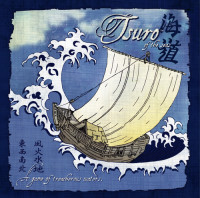
Tsuro is one of our favorite family board games.
It’s simple to play, good for all ages, plays in under 15 minutes, has fantastic components, and can handle up to 8 players.
So when we heard a few years ago that Calliope Games had published Tsuro of the Seas, we were anxious to play it. Unfortunately it took us a few years before we finally played the game.
Well, now that we’ve played it a few times, we’re ready to answer the all important question, “Is Tsuro of the Seas better than Tsuro?
To get to that answer, we’ll first need to give you a quick run-through of the game itself.
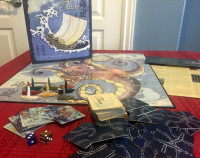
How to Play Tsuro of the Seas
Tsuro of the Seas plays very much like the original Tsuro – in that 2-8 players are placing tiles on the board, moving their player piece along the path, and trying to be the last player remaining on the board.
So if you know how to play Tsuro, Tsuro of the Seas will be very easy to pick up and play. (And even if you don’t know how to play the original game, Tsuro of the Seas is still very easy to pick up and play.)
To start, each player chooses a ship color of their choice and is dealt 3 wake tiles (since the setting is now at sea rather than on land) to be their starting hand. The rest of the wake tiles are placed face down in a draw pile.
So far, this is just like the original game.
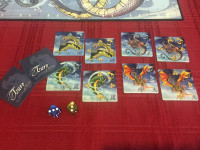
Then the unique aspect of Tsuro of the Seas kicks in – the Daikaiju.
Daikaiju are special sea monster tiles that will wreck havoc in the game.
Depending on the number of players, a different number of daikaiju are placed on the board to begin. For each daikaiju to be placed, the 2 dice are rolled. The result of the Gold die represents a column on the board and the result of the Blue die represents a row on the board. Thus, the two dice results represent the square at the intersection on the game board where the daikaiju is to be placed.
The daikaiju tile is placed on that square with a random orientation. And the rest of the daikaiju tiles are placed in the same manner.
The first player picks a starting mark on the side of the board and places their ship. The rest of the players then do the same in turn order.
From then on, each turn consists of 3 steps:
- Roll the dice and move the daikaiju
- Place a wake tile and move along the wake
- Draw a wake tile
1. Roll for Daikaiju
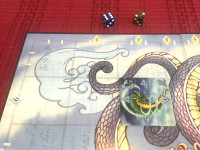
This first step of a player’s turn is what makes Tsuro of the Seas unique from the original. The active player rolls both dice to determine if the daikaiju will move. On a result of 6, 7, or 8, the daikaiju will activate. On all other results, the remain where they are.
For daikaiju movement, the active player rolls a single die.
On the result of 1-5, the daikaiju will all move or rotate as indicated on their tile. On a result of 6, the daikaiju doesn’t move, but a new daikaiju tile is placed on the board (doing so just like in the set up).
To move the daikaiju, the player moves or rotates all the daikaiju tiles in ascending order. Each daikaiju tile has a Rotation number in the upper-right corner. If two daikaiju tiles on the board have the same number, the one with the gold arrow moves first.
So the player finds the tile with the lowest number and moves or rotates it. Then they find the next tile in ascending order and moves or rotates it – and so on until all daikaiju on the board have moved.
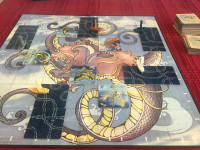
When the daikaiju move, bad things can happen.
If a daikaiju’s movement moves them off the board, that tile is removed from play.
If a daikaiju moves onto a wake tile, that tile and anything on it are removed from the board. Any players thus removed are out of the game and the wake tile is placed at the bottom of the draw pile.
If a daikaiju moves to a square adjacent to the active player’s ship, that ship is is destroyed and removed.
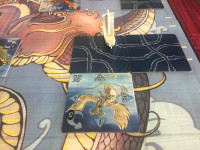
If a daikaiju moves to a square occupied by another daikaiju, the stationary one is removed from the board.
If daikaiju movement cause there to be less than 3 daikaiju tiles on the board, a new daikaiju is placed.
When placing a new daikaiju, it may also destroy an existing wake tile and eliminate players from the game if they’re on such a tile.
Yep – the daikaiju definitely throw a nasty wrench in the game.
2. Place Wake tile and Move
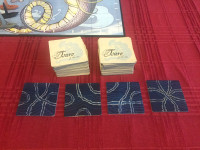
After dealing with the daikaiju, the active player chooses one of their wake tiles and places it in the open space in front of their ship in the orientation of their choosing. They then move their ship forward along the wake to the end of that created route.
If the tile placement connects two players’ ship wakes, each moves to the open end of the new tile.
A player is eliminated from the game if the end of the route connects to the edge of the board or a daikaiju tile.
If opponents are eliminated as a result of a player’s tile placement, the active player can exchange any of the tiles in their hand for the same number of tiles from the eliminated player’s hand. Then the rest are placed at the bottom of the draw pile.
3. Draw Wake tile
The active player ends their turn by drawing a single wake tile into their hand.
Play continues in this manner until there is only one ship remaining on the board. That player is declared the winner of Tsuro of the Seas.
Can the whole family enjoy Tsuro of the Seas?
Tsuro of the Seas is a board game that can be enjoyed by the whole family. Like the original, the game play is simple enough that kids can join in the fun with the adults.
Also like the original, the game board, tiles, and playing pieces are fantastic to look at and play with.
That being said, if your kids don’t like games with player elimination or the thought of being destroyed by a sea monster, then they may not enjoy the game very much.
Is Tsuro of the Seas better than Tsuro?
Very often a follow-up version of a board game improves upon the original.
A recent case in point is King of New York. In our review of King of New York last week we outlined the reasons why we enjoy playing the new follow-up game more than the original King of Tokyo. The additional elements provide more things to consider, evaluate, and do on a turn. And we really enjoy what those additional options bring to the game.
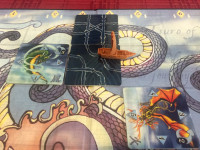
However, we’re sad to say we did not find this the case with Tsuro of the Seas.
Yes, Tsuro of the Seas adds more to happen on a player’s turn. But unfortunately, they’re just things happening to the players rather than providing more options for players to evaluate. Thus, each player’s turn is longer – but without any additional strategic depth of play.
One of the reasons we love Tsuro is because it plays quickly. It’s a light game of building trails and knocking others out. Turns go by quickly and it’s easy to play many games in a row in a short period of time. So increasing the length of the game in Tsuro of the Seas without added enjoyment doesn’t sit well with us.
Sure, the daikaiju don’t move every turn. But when we play, they definitely do move more often than not.
And very often players are eliminated from the game due to the fate of the dice rather than by their choices.
Granted, players in the original Tsuro are often eliminated because of the action of other players (that’s the point of the game). But when those situations occur, the players can see it coming and try to plan around it. Unfortunately, in Tsuro of the Seas, players have less control since the board can change considerably before it’s their turn again.
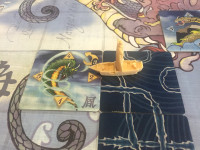
So if you like games with a bit more chaos, or don’t like how simple, short and sweet the original Tsuro is, then you may find Tsuro of the Seas to your liking.
But for us, if we’re looking for a light, fun board game to play with up to 8 players, we’ll keep it simple and continue grabbing the original Tsuro.
Does that mean we’re getting rid of Tsuro of the Seas?
No. It’s still sitting nicely next to the original on our game shelves. Because after all, just because it has daikaiju tiles in the game, doesn’t mean we have to play with them. We can use the cool looking board, tiles, and playing pieces to play a standard game of Tsuro without the monsters.
How does Tsuro of the Seas score on our “Let’s Play Again” game meter?
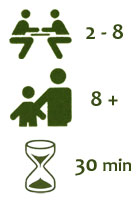 As you can guess from our brief comparison, Tsuro of the Seas doesn’t score very well on our “Let’s play again” game meter. Since we feel the additional elements add more randomness than we like in our games of Tsuro, Tsuro of the Seas will be played less frequently in our family.
As you can guess from our brief comparison, Tsuro of the Seas doesn’t score very well on our “Let’s play again” game meter. Since we feel the additional elements add more randomness than we like in our games of Tsuro, Tsuro of the Seas will be played less frequently in our family.
But if you don’t own either game yet and are deciding between the two, you may want to consider Tsuro of the Seas because then you have the option of playing either a standard game of Tsuro or with all the daikaiju elements.
Thanks Calliope Games for a copy of Tsuro of the Seas for more family fun.
Other great family board games and card games you might enjoy:

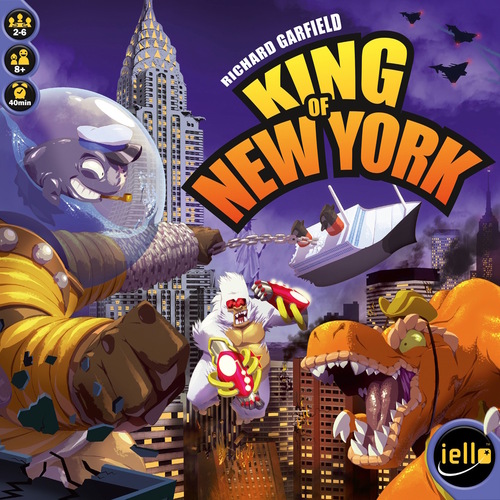

Not only does it add a new element, but it just makes people randomly lose the game. Some people dislike player elimination in games, and this does seem to take it to an extreme.
James – That’s a great summary statement.
That’s good to read.
I attempted to learn Tsuro of the Seas, and play with my 4yo (while he was beside me, hankering to play). I wound up giving up on trying to work out the daikaiju, and just playing the basic game. He loved it.
We ended up buying straight Tsuro (because I was _looking_ for games to suit him, that I enjoyed), and it’s turned out to be his game of choice:-) (Which may have something to do with the fact that he regularly wins at it!) But it’s also popular with the rest of the family.
From reading this review, I can see that the other probably wouldn’t have been such a hit!